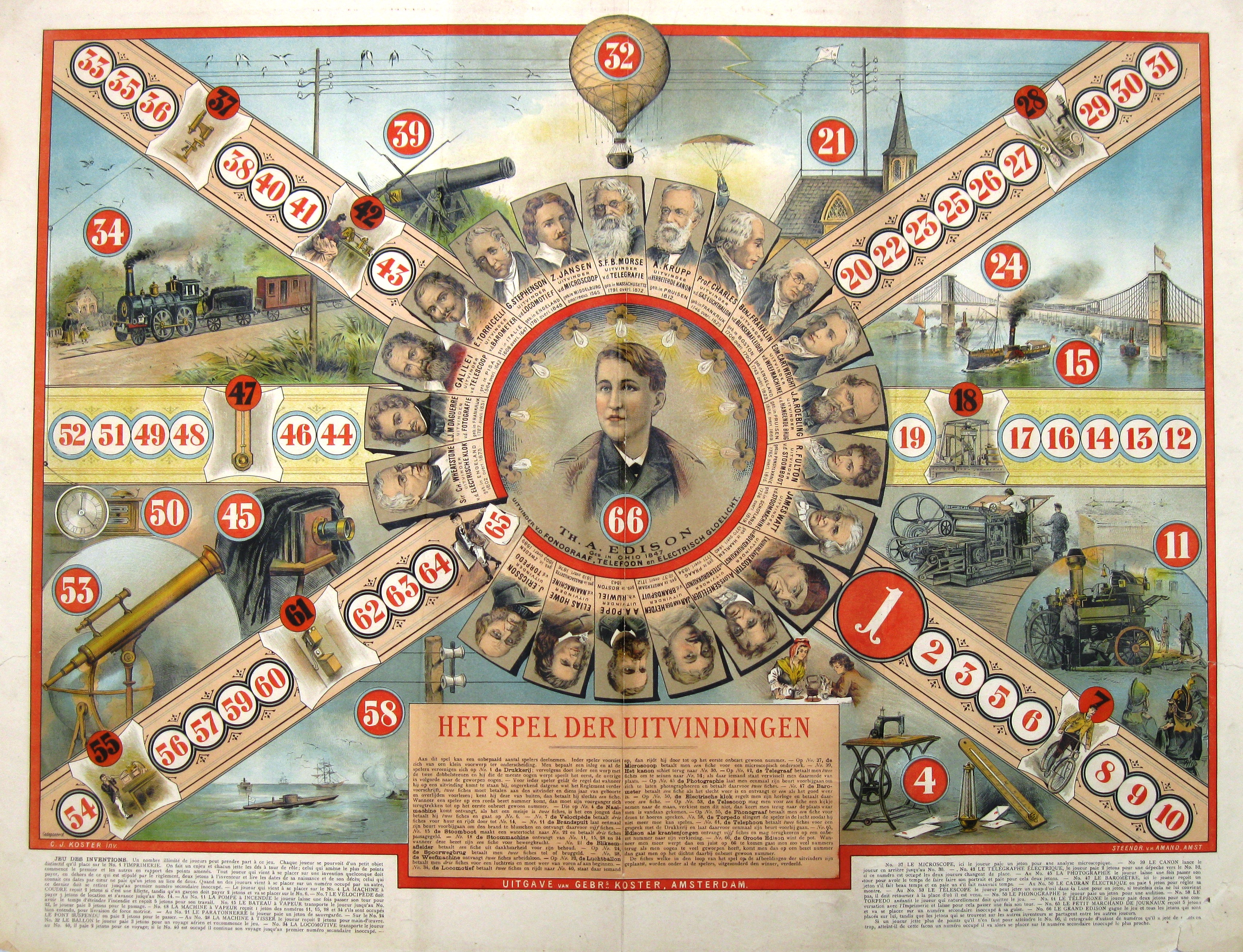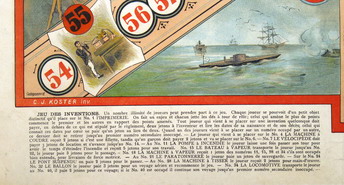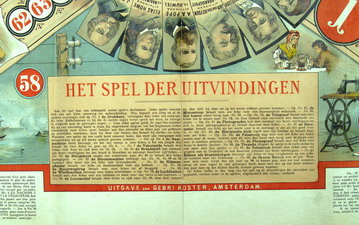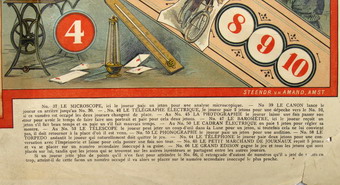Giochi dell'Oca e di percorso
(by Luigi Ciompi & Adrian Seville)
(by Luigi Ciompi & Adrian Seville)

|
Giochi dell'Oca e di percorso
(by Luigi Ciompi & Adrian Seville) |

|
 |

Torna alla ricerca giochi (back to game search) |
 |
| Spel (Het) Der Uitvindingen - Jeu des Inventions | ||
 |
Versione stampabile
 |
Invia una segnalazione

|
    |
primo autore: | Koster C. J. |
| secondo autore: | Koster C. J. inv. | |
| anno: | 1894 | |
| luogo: |
Olanda-Amsterdam |
|
| periodo: | XIX secolo (4°/4) | |
| percorso: | Percorso di 66 caselle numerate | |
| materiale: | carta (paper) (papier) | |
| dimensioni: | 600X800 (560X700) | |
| stampa: | Cromolitografia | |
| luogo acquisto: | ||
| data acquisto: | ||
| dimensioni confezione: | ||
| numero caselle: | 66 | |
| categoria: | Personaggi ed eventi storici | |
| tipo di gioco: | Gioco di percorso | |
| editore: | Steendr vn Amand | |
| stampatore: | Uitgave van Gebr.s Koster, Amsterdam | |
| proprietario: | Collezione A. Seville | |
| autore delle foto: | A. Seville | |
| numero di catalogo: | 1762 | |
| descrizione: |
Gioco di 66 caselle numerate. REGOLE: in basso (in francese e olandese). CASELLE: con didascalia. REFERENZA 1 Game 52: The Game of Invention C. J. Koster. Het Spel der Uitvindingen. Amsterdam: Gebrs Koster, [1894]. Chromolithograph printed by Amand, 56 x 70 cm. Refs.: Ciompi/Seville 1762; Bujinsters, p. 62. The subject of this handsome chromolithograph designed by C. J. Koster is Invention. The numbered track follows a complex path to the winning space, at 66, which shows the young Thomas Edison surrounded by a blaze of his incandescent lamps and a pantheon of other inventors, forming a ring: Morse (telegraph), Krupp (armaments), Charles (gas balloon), Franklin (lightning rod), Cartwright (power loom), Roebling (suspension bridge), Fulton (steamboat), James Watt (steam engine), Koster (book printing), Senefelder (lithography), van der Heyden (fire engine), Pope (bicycle), Howe (reaper), Ericsson (torpedo), Wheatstone (telegraph), Daguerre (photography), Galilei (telescope), Torricelli (barometer), G. Stephenson (locomotive), and Jansen (microscope). Edison is credited with the invention of the phonograph (invented 1879), the telephone (1878) and the incandescent lamp (1879). The rules are given in French as well as in Dutch. They make clear that it is intended as an educational game, and anyone falling on to an invention space must pay two counters and must read the dates of birth and death. But if these are known by heart, the player pays only one counter. The game is not gender neutral: a girl landing on no. 2, the sewing machine, receives two counters; but a boy must pay two. For the most part, the invention spaces have instructions that are obviously appropriate. For example, the bicycle at space 7 advances you to space 14. At space 11, the fire-pump, you wait one turn to put out the fire. However, at space 32, the balloon, you pay three counters for your aerial voyage and start the game again. Landing on space 39, the cannon sends you back to space 30. Space 58, the traditional death space, shows the torpedo exploding, thus annihilating the player, who is then out of the game. At the end, reverse overthrows are played; the player landing exactly on the Edison space takes the pool. The crediting of Laurens Jansz Koster (c. 1370–c. 1440) with the invention of book printing, rather than Gutenberg, is a well-known prejudice of the Dutch! (Adrian Seville) Exhibitions: - "The Royal Game of the Goose four hundred years of printed Board Games". Exhibition at the Grolier Club, February 23 - May 14, 2016 (Prof. Adrian Seville). |
|
| bibliografia: |
1) BUIJNSTERS, P.J. and Buijnsters-Smets,L. : "Papertoys", Zwolle, Waanders, 2005. 2) SEVILLE, Adrian:"The Royal Game of the Goose four hundred years of printed Board Games". Catalogue of an Exhibition at the Grolier Club, February 23 - May 14, 2016. |
|
Vai alla ricerca giochi Vai all'elenco autori